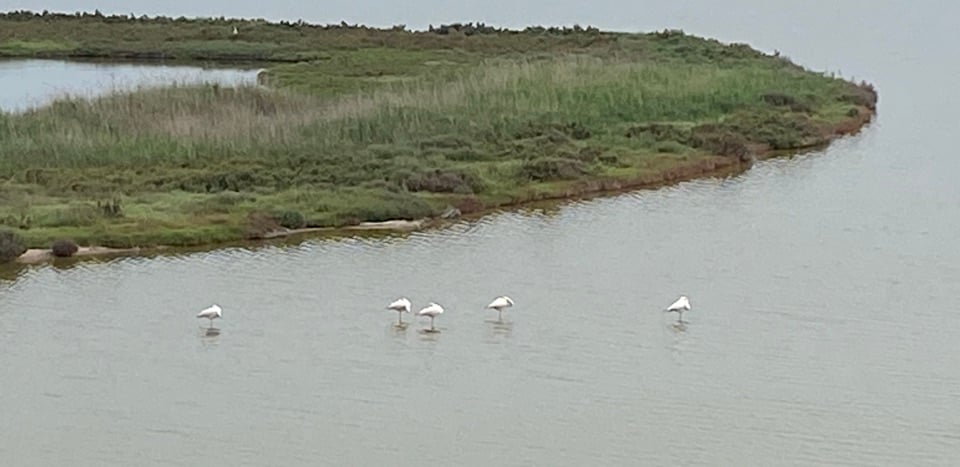Eat This Newsletter 275: Infrastructure
Hello
Sound underpinnings are important, whether you are smashing bones with a rock or trying to keep the profits rolling in.
Big Bone Grease
Perhaps you’ve already read news reports about the discovery of a Neanderthal “fat factory” from 125,000 years ago. In case not, here’s a sober summary that isn’t behind a paywall.
A large site in central Germany, on the edge of a lake, was a food processing hub. Among other activities, people dragged the bones and carcasses of large mammals there, broke up the bones and boiled them to extract bone grease, a very nutritious addition to the diet.
There’s a lot more in the scientific paper, but one point in particular seems to bother people. “How did early humans ‘boil’ bone fragments without large vessels that could withstand fire?” The paper has this to say:
”There is currently no direct evidence for actual boiling of the small bone fragments. However, fire proxies (charcoal, heated bones, and heated lithics) were recovered in abundance within the concentration of faunal remains. Study of microfossils retrieved from calculus has suggested that Neanderthals did boil food items. Underlining earlier work by Speth, experiments recently demonstrated that organic perishable containers, e.g., made out of deer skin or birch bark, placed directly on a fire, are capable of heating water sufficiently to process food, with the advantages of wet-cooking beginning at lower, sub-boiling temperatures than thus far acknowledged.
If you’ve been listening to the podcast for a while, the name Speth might ring a bell. In one of the very first episodes, back in 2013, I was puzzled by research that revealed cooked starch grains in the Neanderthal diet about 45,000 years ago, well before fire-proof vessels. John Speth told me the story of how he discovered that Neanderthals certainly could have boiled food. The fat factory suggests that they had already been doing so for about 75,000 years.
School Lunch, Again
A month or so ago I linked to the story of the Utah Lunch Debt Relief Foundation, noting that I was not going to ask the obvious questions about school lunches in the USA. Seems I can’t avoid them. The Science History Institute in Philadelphia has a new exhibit on the history of school lunches, which includes an important contribution from Philadelphia. Obviously I couldn’t just pop along, but I did listen to the podcast, which has a good transcript if you’re pressed for time.
As the host acknowledged, the history of school lunches in the USA is full of unintended consequences. The fully intentional consequence that I cannot wrap my head around is why any half-arsed nation state would not view feeding its children as an investment rather than an expense. The episode made the point that money could be found for infrastructure, like kitchens, but not for the food to cook nor the necessary cooks. Are children not the infrastructure of the community?
Big Food Fights Back
Oh no! People who get weight-loss drugs like Ozempic are failing to buy enough cookies, chocolate bars and potato chips to keep Big Snack in profit. Imagine the terror in the innovation departments as the boffins wrestle with this unforeseen problem, on top of disarray in food subsidies from an ungrateful administration. Smaller packages! More protein! New flavours!
“Some observers are wondering whether consumers’ use of GLP-1 weight-loss drugs, such as Ozempic, or concerns about the health risks of eating ultra-processed foods will permanently reduce snacking,” according to the Financial Times. If you enjoy a bit of schadenfreude as much as I do, you’re in for a treat (and the link is to a copy that escaped the paywall).
Also, I wonder whether Ferrero, of Nutella fame, is going to regret spending US$3.1 billion for WK Kellogg Co., spun off a couple of years ago from the entity now known as Kellonova (and which marketing genius came up with that name). Still, if straitened shoppers take the WK Kellogg CEO’s advice to eat breakfast cereal for dinner, maybe the prospects are indeed rosy.
Riso Amaro

A couple of months ago I was thrilled to see a few flamingos in a lagoon that forms part of the Po delta. Now I learn that they are “ravaging rice for risotto”. It isn’t that they are eating the rice seedlings. Rather they stir up the mud in search of “mollusks, algae or insects,” and that disturbs the rice. (What they really need, of course, is a good dose of brine shrimps in addition to algae, to pink up their punk.)
Anyway, the rice farmers are up in arms because it seems that the flamingos, which first appeared in the Po delta around 2000, have now discovered nearby rice paddies, and nobody knows why. Or what to do.
A local ornithologist has suggested surrounding rice fields with tall trees or hedges, but that is going to take time. Even better, he says, reduce the water level in the flooded fields from 30 cm to somewhere between 5 and 10 cm. That certainly sounds doable. Does it affect the rice harvest?
Take care

p.s. I know I’ll have to make a transcript of the Neanderthal Diet podcast, and fix the many broken links, but I cannot do that for about a week.
Add a comment: